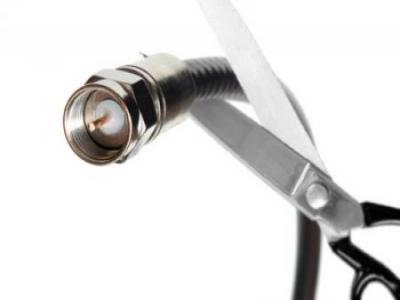Moffett: Cord-Cutting Slowing Down

Despite the consensus that cord-cutting would only get worse, MoffettNathanson principal and senior analyst Craig Moffett said the rate that consumers canceled their pay TV subscriptions declined by 3.3% in Q2, a one-tenth of a percentage point improvement over the prior year.
That’s right, cord-cutting is slowing down.
But don’t get too excited yet. The bulk of that improvement was due to a decline in telco TV losses and continued gains by virtual MVPDs. Cable and satellite companies are still losing customers at an increased pace.
In a research note Monday, Moffett said based on data from other virtual MVPDs like PlayStation Vue, Hulu Live and YouTube TV – neither of which formally report subscriber numbers – it is possible that the number of U.S. households that pay for a television subscription could actually be rising. That would be the first such growth since 2012, he wrote.
Moffett stressed that a one-tenth of one percent improvement does not signal a reversal in cord cutting by any means. Amazon has yet to go “all-in” on video and Apple is still investigating its long anticipated entrance into the segment, which could move the pendulum in the other direction quickly. But it does suggest that perhaps the predictions of the rapid decline of pay TV may have been a bit premature.
“A consensus had emerged that things could only get worse. Fast,” Moffett wrote. “That view now appears to have been too bearish. Too bearish for Cable. Too bearish for Media.”
Overall, Moffett wrote that pay TV subscriptions – including those from vMVPDs – rose by 0.1% in the period. That increase could have been helped by housing growth in the period – the U.S. added 500,000 occupied homes in the second quarter, up from essentially zero in the prior year, according to Moffett.
The smarter way to stay on top of broadcasting and cable industry. Sign up below
Traditional pay TV providers lost 849,000 subscribers in Q2 2018, an improvement over the 973,000 the segment lost in Q2 2017. But that gain was entirely due to improvements in the telco TV sector, which reduced its losses from 279,000 in Q2 017 to 65,000 in Q2 2018. Cable losses rose from 222,000 in Q2 2017 to 301,000 in Q2 2018 and satellite losses increased from 472,000 in Q2 2017 to 483,000 in the most recent period.
Virtual MVPDs continued to gain ground, adding 691,000 new customers in Q2 2018, compared to a gain of 400,000 in the prior year.
The analyst cautioned that the growth in pay TV may not be sustainable, adding that many homes are cutting traditional cable or satellite service for lower priced vMVPDs, which will keep conversion rates – the ratio of losses by traditional pay TV to gains by vMVPDs – high. Moffett estimates the current conversion rate is about 85%.
The pay TV increase could mean two things: either more customers are dropping their traditional pay TV service for vMVPDs (and therefore conversion rates will be maintained), or, because cord-cutting existed long before many vMVPDs came on the scene, it is a signal of pent-up demand, which would mean conversion rates will drop.
“It will take some time before we can say with any certainty which of these two arguments is closer to the mark,” Moffett wrote.
